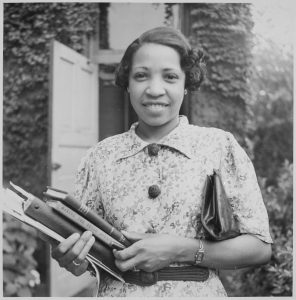This topic was one of the most interesting for me to research, as I have a strong passion for education. I have been a student for nearly my entire life, and I would like to pursue teaching, so I feel a connection to this topic. Women in the 1930s and 1940s were being accepted into universities, however there were less female students than male students. Also, female students were typically concentrated in more “feminine” programs such as arts, education, and nursing. It was far less common to see a woman in law school or an engineering program, for example, as these were considered subjects primarily for men. One reason they were considered primarily for men was because there were less jobs in these fields for women. To find more information about women and work during this time period, visit the page entitled “Working Women” here. Another issue for women getting an education was tuition costs. As men were more likely to succeed than women after getting a degree, there was a higher chance that men would get funded by their parents, particularly if parents had to choose between male and female siblings. Social life was also an issue for women attending universities in Canada. On residence in particular, women were often expected to participate in domestic duties, whereas men were not. There were also stricter rules in regards to what women were allowed to do in their spare time, as people felt that women needed to be kept supervised in order to keep their morality in check. These social and academic barriers made being a post-secondary student more difficult than it was for men. Still, women continued to enroll in colleges and universities, and they continued to get degrees. This perseverance despite barriers is what made getting a post-secondary education a feminist action for women in the 30s and 40s.
